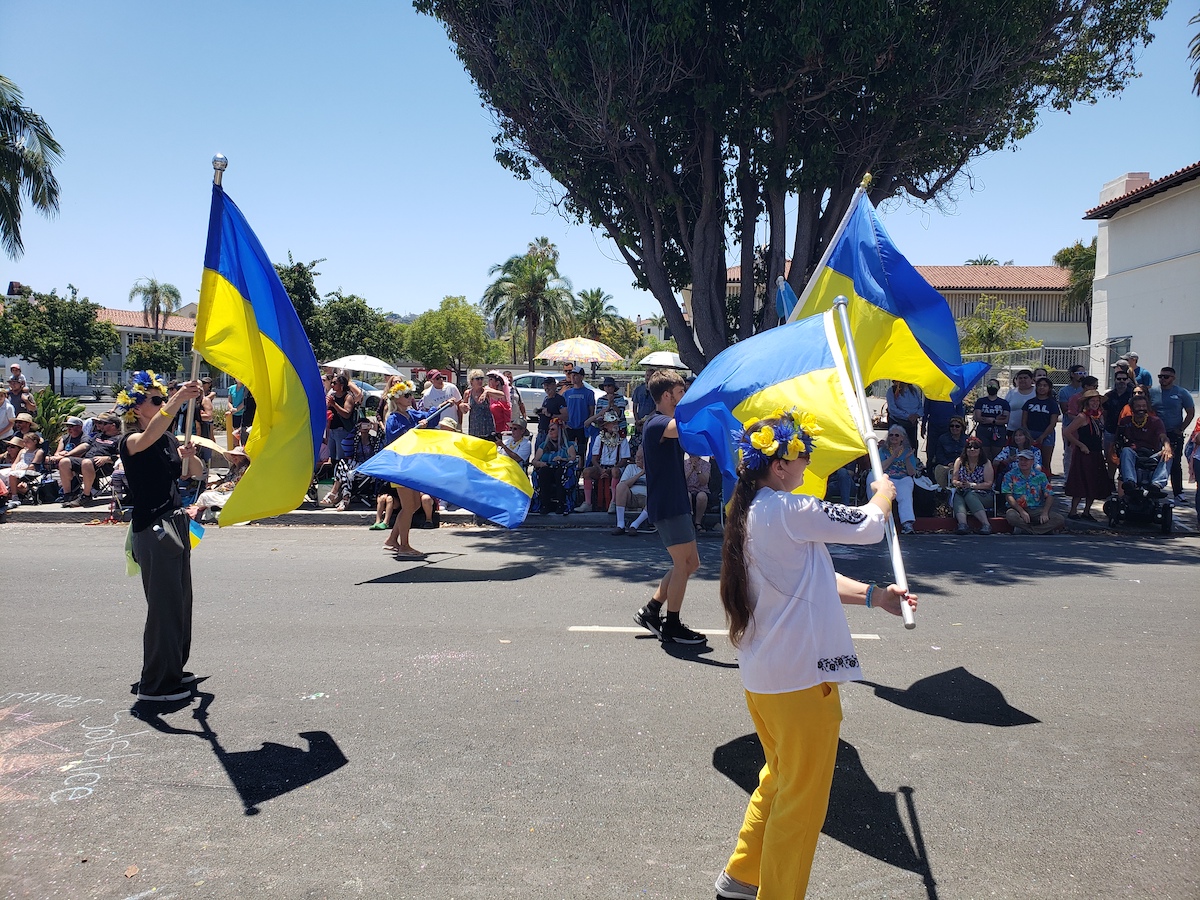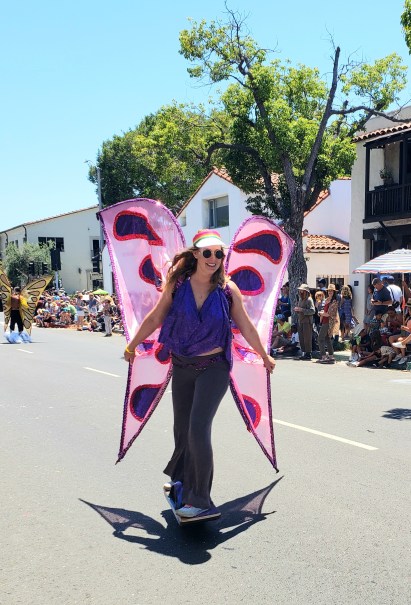Solstice Takes to the Street, Music Academy Goes Bowl-ing
Summer Solstice Goes Wild on Santa Barbara Street; Music Academy Orchestra Lights Up the Santa Barbara Bowl

One of the sure and subversive charms of the Summer Solstice parade has always related to its welcome blows against the status quo. Traffic patterns and business-as-usual are gleefully upended for a few hours. Other parades — Fiesta, Fourth of July, Memorial Day — also perform a happy civic disruption function, but Solstice wins the prize for giddy, bohemian abandon and sheer bring-on-the-summer zeal.
Of course, State Street has been a traffic-liberated, business-as-unusual zone for two years now, under pandemic retooling. Soaking in last Saturday’s “Shine”-themed Solstice parade on Santa Barbara Street felt like the start of something fresh, and maybe the ending of COVID angst. Maybe.
There was dancing and rhythm-driven music modules to keep senses hopping, along with the usual motley assortment of wild and post-hippie, gonzo Renaissance Fair costumes aplenty. It was, at last, Solstice time again, gone wild in the street — but this time, Santa Barbara Street.
SERIOUS MUSIC HITS THE BOWL
Post-parade Solstice reverie took many shapes and demographics, including the tidy and all-ages crowd checking out Beethoven’s Fifth at the Santa Barbara Bowl on Saturday night. It was a grand and celebratory evening, the everyperson’s gala opening — officially a “community concert” — in the current 75th Music Academy festival.
Beethoven blockbusters can make for a surefire method of courting a large community audience, as heard in 2017, when the Music Academy brought the New York Philharmonic to do up Beethoven’s Ninth in the SBCC La Playa Stadium. Reportedly, the concert — in the waning moments of Alan Gilbert’s direction — drew the largest single classical concert audience (more than 7,000) in Santa Barbara history.
Part of the inspiration of being at the Bowl on Saturday, aside from the all-too-rare experience of hearing fine classical sounds in this venue, was being in the presence of kids — 400 of them — being exposed to “art music” alongside music fans old and new. Thanks to the endowed patronage of the late cultural superhero Leni Fe Bland, tickets for the concert were a doable 10 bucks each, with youngsters 7-17 getting in free.
Maestro Donato Cabrera, filling in on short notice for longtime Music Academy conductor Larry Rachleff, also served as a kindly tour guide to the program. Before launching into the signature opening handful of ominous notes in Beethoven’s Fifth, Cabrera quipped, “For those of you hearing it for the first time, strap on your seatbelts.” It was an altogether sharp performance of the oft-heard classical classic. Yes, there was clapping between movements this night out, a forgivable tweak of protocol.
Also heard that night was Mexican composer Arturo Márquez’s Danzón No. 2, a tasty, tangy confection. Márquez’s musical voice was only recently heard in the 805, when the Santa Barbara Symphony played his Fandango Violin Concert, Anne Akiko-Myers doing the honors, beautifully.
For my money, Saturday’s show-stealer came last, with Prokofiev’s Suite from Romeo and Juliet. The kaleidoscopic set of short movements teemed with Prokofiev’s wily imagination and salted wit and illustrational skills.
Sign up for Indy Today to receive fresh news from Independent.com, in your inbox, every morning.
As usual, the Academy Festival Orchestra — literally born two weeks ago, when the current crop of Academy fellows arrived — sounded taut, flexible, and mature beyond the years of its members.
I will always remember the first time the Music Academy presented a concert at the Bowl, in 2007. John Williams was the conductor-composer in the spotlight. Before the expected avalanche of popcorn music in the second half, showcasing his film score work, the evening opened with his impressive and serious-minded Concerto for Violin and Orchestra, from his pre-Spielbergian days, with violinist star Gil Shaham as soloist.

A still-lingering thought train was launched: What if the Bowl, this most serious of venues, presented more serious music to balance out its primarily pop culture agenda? Perchance to dream.
SKIDDING INTO TOWN
Given the band name Southern Culture on the Skids, you know some irony and attitude will season the in-house brew. Sure enough, there was plenty of winking behind the feisty fine, punky-pyscho, warped nostalgia-fueled songbook when the North Carolina–born (b. 1983) trio blew into SOhO on Sunday. But there was also pure retro-rocking firepower, too, on a setlist including “Cheap Motels,” “’69 El Camino,” “Too Much Pork for Just One Fork,” and a suave cover of “The House of Bamboo.” SOhO was a house of good, kitsch rocking grooves on that night.
THIS WEEK’S DOINGS
Friendly piano giant Jeremy Denk in recital at Hahn Hall on Thursday, June 30; Music Academy orchestra at the Granada on Saturday, July 2, playing Mahler’s “Titan” and more.
ON the Beat is the new all-things music and music-adjacent column by music/arts journalist-critic Josef Woodard, who has written for the Independent since its beginning (and even for the predecessor weekly the News & Review). He wrote the “Fringe Beat” column for 25 years, but “ON the Beat” is more inclusive, preaching the gospel of eclectic musical tastes.
Woodard grew up in Santa Barbara, soaking in/writing about music locally and internationally. He wrote for the Los Angeles Times for a quarter century, has contributed to Rolling Stone and Entertainment Weekly, continues contributing to DownBeat and elsewhere, and has published books on jazz legends Charlie Haden and Charles Lloyd. His debut novel, the salty-satirical Ladies Who Lunch, dropped in 2021. He is also a musician-songwriter-situationist with albums out on Household Ink Records.
Support the Santa Barbara Independent through a long-term or a single contribution.




You must be logged in to post a comment.